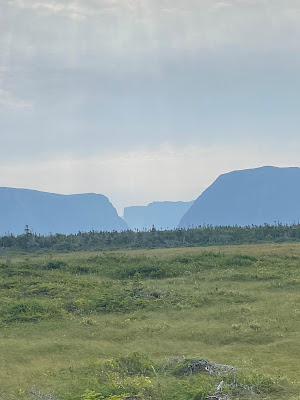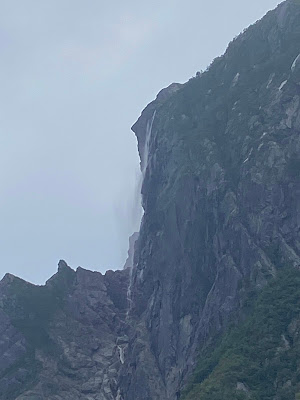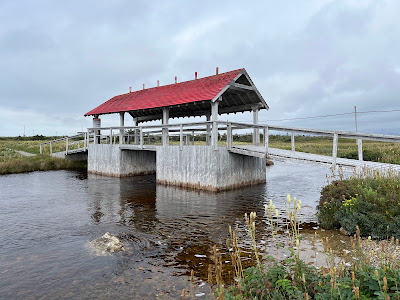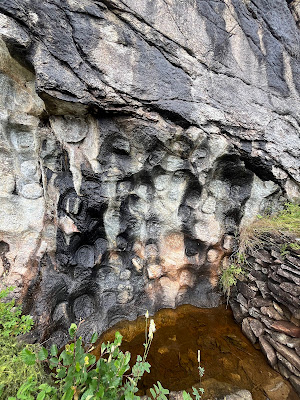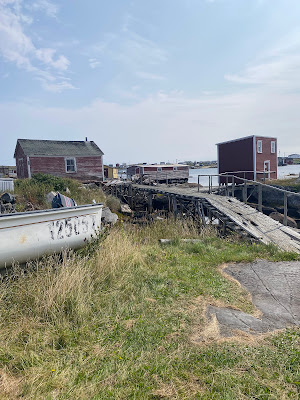 |
| View of Bottle Cove |
With just a few days left on The Rock, we decided to take a short drive west from Corner Brook to visit Lark Harbour, Bottle Cove and Blow Me Down Provincial Park - aptly named because the winds in this area are quite notorious for being strong, and can even become quite violent. Gusts of 85km/hr are not uncommon, and storms with 150km/hr winds have created havoc and caused extensive damage in the area in past years. Yet people still live here… I don’t get it!
Fun Fact #1: a ‘Fresh Breeze’ is on the Beaufort Scale is between 29-38kph.
It seems that over the two nights we stayed at the campground in the park, the wind was pretty typical. We climbed the Governor’s Staircase to the top of Tortoise Mountain for a view of York and Lark Harbours and Governors Island. At the viewing deck at the top, D had to scramble through scrub brush to retrieve his ball cap after a wind gust grabbed it right from his head.
 |
| Governor's Staircase is built into a natural cut in the rock face |
 |
| Climbing the Governor's Staircase |
 |
| A bit windy at the top! |
 |
| Lovely views of Lark Harbour |
Fun Fact #2: it takes a 110km/hr wind to knock an average sized adult off their feet.
I’m not sure it was that windy, but the next day, I was knocked off my bike by the wind as we rode back from Bottle Cove. And no, I had not been drinking!
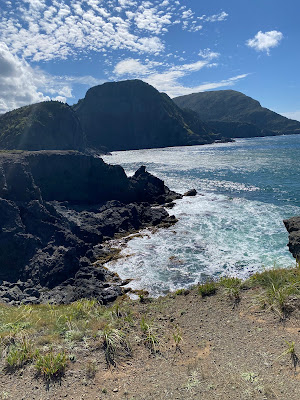 |
| Entrance to Bottle Cove |
Despite the wind, and despite being laughed at by D for falling off my bike, the journey was well worth it for the beautiful views we enjoyed. And this far in our trip through Newfoundland, we’ve come to expect a bit of wind every day - just some days more than others.



